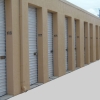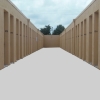Moving and Packing Tips
September 12, 2014
Moving and Packing Tips
The thought of moving is very stressful. Then the process of packing and unpacking will take time and effort. You need to be an organized and thorough person. It will minimize stress and increase your packing speed. It will also give you the feeling that you are in control and give yourself time to relax amidst your packing duty. Packing will take a while, so give yourself at least six weeks to two months to pack and organize. This will give you time to plan carefully and decide what things to go and what to be left behind. The following are moving and packing tips that may help you organize:
• Make a checklist. Making a checklist will keep you organized and save you time. Your checklist should include what things should be packed first and what items should be last. Start from non-essential or out-of-season items. For instance, if you are packing at summer time, you can organize your checklist from non-essential winter items to the things you'll need before the moving date. A complete checklist will help you remember things and take the task out in your mind to a piece of paper.
• Prepare packing supplies. It is easier to pack when supplies are ready and available. Boxes, old newspaper, bubble wrap, packing tape, marking pens and others should be prepared ahead of time.
• Breakable items. Breakable and fragile items need careful packing. You need right tools such as quality boxes and padding to prevent it from bumping and shifting during the travel.
1. Plates: Items like plates should be arrange vertically with lots of padding in the bottom, sides and top. It should be wrapped individually with bubble wrap or plain paper and secure it with tape. Clothes and towels can be used as padding. A “dishpack” or “5.2 cubic foot box” can be used because it has double corrugated and specially designed box for breakable items.
2. Glasses: Glasses should be packed individually and place it in a small boxes before arranging them in a large box. A lot of crumpled papers or pieces of clothes inside the box to fill-in the spaces will protect the items from breaking. Placing the heaviest items in the bottom and layer it with lightest will make your packing more secure.
3. Picture frames and mirrors: Small and medium frames can be placed in the box with lot of padding in it. The frames should be wrapped individually with bubble wrap or towels and secure it with tape or tie it around. Then place it in a box vertically. A padding in between each frame will protect the items from shifting and bumping. Picture frames that are bigger or over 3 feet in size should be secured with a moving blanket, plastic wrapped, and moved separately.
• Electronics. Your electronics items such as TV, computers, laptops and others need careful packing. Pillows, blankets and clothes can be used as additional padding. Appropriate boxes should be prepared. It is better if you still have the original boxes from the manufacturer. Keep all the accessories and cables together with the items to avoid misplacing it. You can put small accessories in a Ziploc or old socks and tape it together with the device. Batteries, ink cartridge, CD's and others should be detached from the device. Make sure to know how to reassemble any electronic equipment before you disassemble it. Special crates or boxes from your moving company for plasma TV and large screen should be used.
• Clothing. Packing clothes is easier because you do not need to worry about breaking and misplacing it. Pack your hanging clothes in a big garbage bag with hangers sticking out the top. You can use rubber bands to secure the hanger together (6 or more at a time). Other clothes can be used as a padding to breakable items. Bags, belts and shoes can be placed in shopping bags and put them together in a box.
• Linens, bedding, curtain and others. Blankets, sheets, tablecloths, towels, pillowcases and curtains can be secure in a large plastic bags and arrange them in one or more boxes. Some can be used as extra padding in your breakable items.
• Furniture. Bubble wrap, plastic stretch wrap, corrugated cardboard sheets, furniture blankets, Sofa and mattress covers, old blankets or towels are the needed items for your furniture. Make sure to clean your furniture before the packing and moving.
• Sealing and Packing. Every time you fill a box, seal it tightly and label it. Label it such as “fragile”, “this side up” and others. You can indicate names to each box and which part of the house should it go. For instance, if the box contain your child's clothing, indicate her name and label it “bedroom”, so the movers will know where it belongs. It will also help you in unpacking. You can number each box as well.
Your moving will be easier if you do your packing right. Packing each item to avoid damage will protect your investments. The secret to a successful move is the organized packing.



